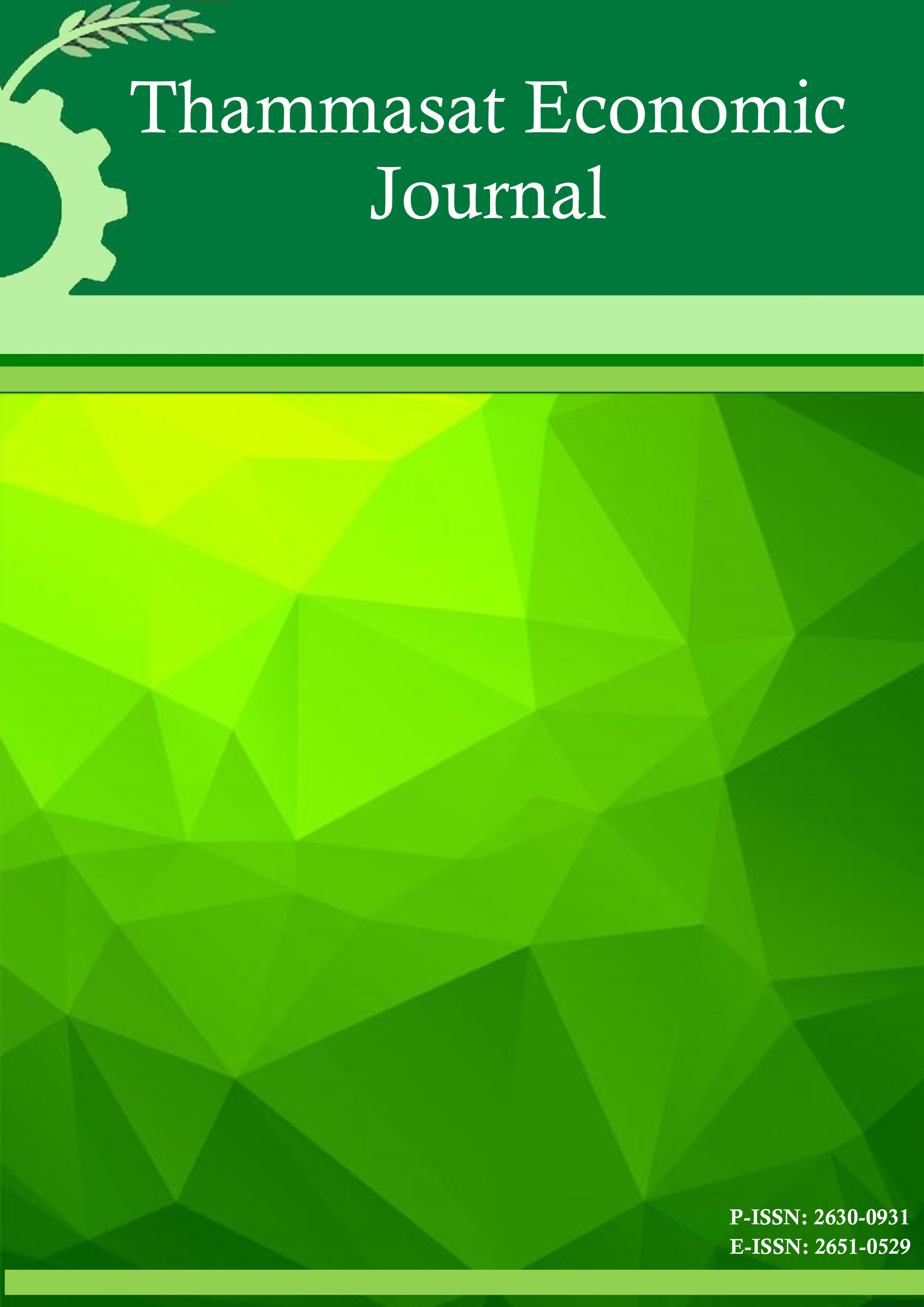Liquefied Petroleum Gas Pricing in Thailand
Impacts and Alternatives
Keywords:
THAIOIL PUBLIC COMPANY LIMITEDAbstract
This paper analyzes and evaluates various pricing regimes for liquefied petroleum gas (LPG) in Thailand, which include the current price fixing, weighted average pricing, full subsidy pricing and two-tier pricing. Under each regime, the study employs partial equilibrium analysis to determine LPG prices; the quantities demanded and supplied; import (export); and fiscal and social impacts. It also identifies the magnitudes of government tax revenues and fuel subsidies together with their fiscal implications. The results of the analysis show that LPG retail price under the flexible pricing regime is the highest among all of these regimes. The abrupt increase in price will significantly reduce domestic demand so much that there will be some LPG left for export from Thailand. This study also finds that the net fiscal impacts of changes from the current LPG pricing to alternative pricing regimes are positive. However, under the alternative pricing regimes except the flexible pricing regime, the suppliers have to bear the huge amount of LPG import burden and high opportunity costs of LPG exports to the world market. Considering other criteria including efficiency, equity, cost of living and cost of production, this study concludes that the weighted average pricing regime is the most appropriate regime under the current situation of Thailand because it reflects the true cost of production resulting in reasonable, stable and fair LPG prices and a smaller fiscal burden.
References
2. ชยันต์ ตันติวัสดาการ, นิรมล สุธรรมกิจ และชโลทร แก่นสันติสุขมงคล. (2552) โครงการศึกษาการใช้ค่าธรรมเนียมคาร์บอน (Carbon surcharge) เพื่อเพิ่มประสิทธิภาพในการประหยัดพลังงานและจัดการมลพิษทางอากาศ ศูนย์บริการวิชาการเศรษฐศาสตร์ คณะเศรษฐศาสตร์ มหาวิทยาลัยธรรมศาสตร์
3. ไพฑูรย์ ไกรพรศักดิ์. (2550) การศึกษาและวิเคราะห์ตัวแบบการบริโภคน้ำมันกับผลกระทบด้านราคาน้ำมันและบทประยุกต์ทางนโยบาย, โครงการพัฒนาข้อมูลพลังงาน ดัชนีทางเศรษฐกิจและตัวแบบการวิเคราะห์ทางเศรษฐศาสตร์เพื่อติดตามผลและการวางแผนนโยบายด้านพลังงาน, ศูนย์ศึกษานโยบายเพื่อการพัฒนา, คณะเศรษฐศาสตร์ จุฬาลงกรณ์มหาวิทยาลัย และสานักงานนโยบายและแผนพลังงาน กระทรวงพลังงาน.
4. บริษัท เบอร์รา จากัด. (2542) แนวทางการยกเลิกการควบคุมราคาก๊าซปิโตรเลียมเหลวและการแก้ไขปัญหาที่เกี่ยวข้องกับโครงสร้างราคา, เสนอต่อสานักงานคณะกรรมการนโยบายพลังงานแห่งชาติ, กุมภาพันธ์.
5. สานักงานคณะกรรมการนโยบายพลังงานแห่งชาติ. (2542) ขั้นตอนการยกเลิกการควบคุมราคาก๊าซปิโตรเลียมเหลวและขั้นตอนการปรับปรุงระบบการค้าและมาตรฐานความปลอดภัยก๊าซปิโตรเลียมเหลว, กุมภาพันธ์.
6. สำนักงานนโยบายและแผนพลังงาน. (2550) ก๊าซปิโตรเลียมเหลว, 30 พฤศจิกายน.
7. อุษณีย์ ไทยาพงศ์สกุล. (2547) การศึกษาความยืดหยุ่นอุปสงค์ก๊าซปิโตรเลียมเหลว (LPG), สารนิพนธ์ หลักสูตรเศรษฐศาสตร์มหาบัณฑิต, มหาวิทยาลัยรามคาแหง.
8. Lucon, O., Suani, T. C. & Jose, G. (2004) LPG in Brazil: Lessons and Challenges. Energy for Sustainable Development, 8(3), pp. 82-90.










